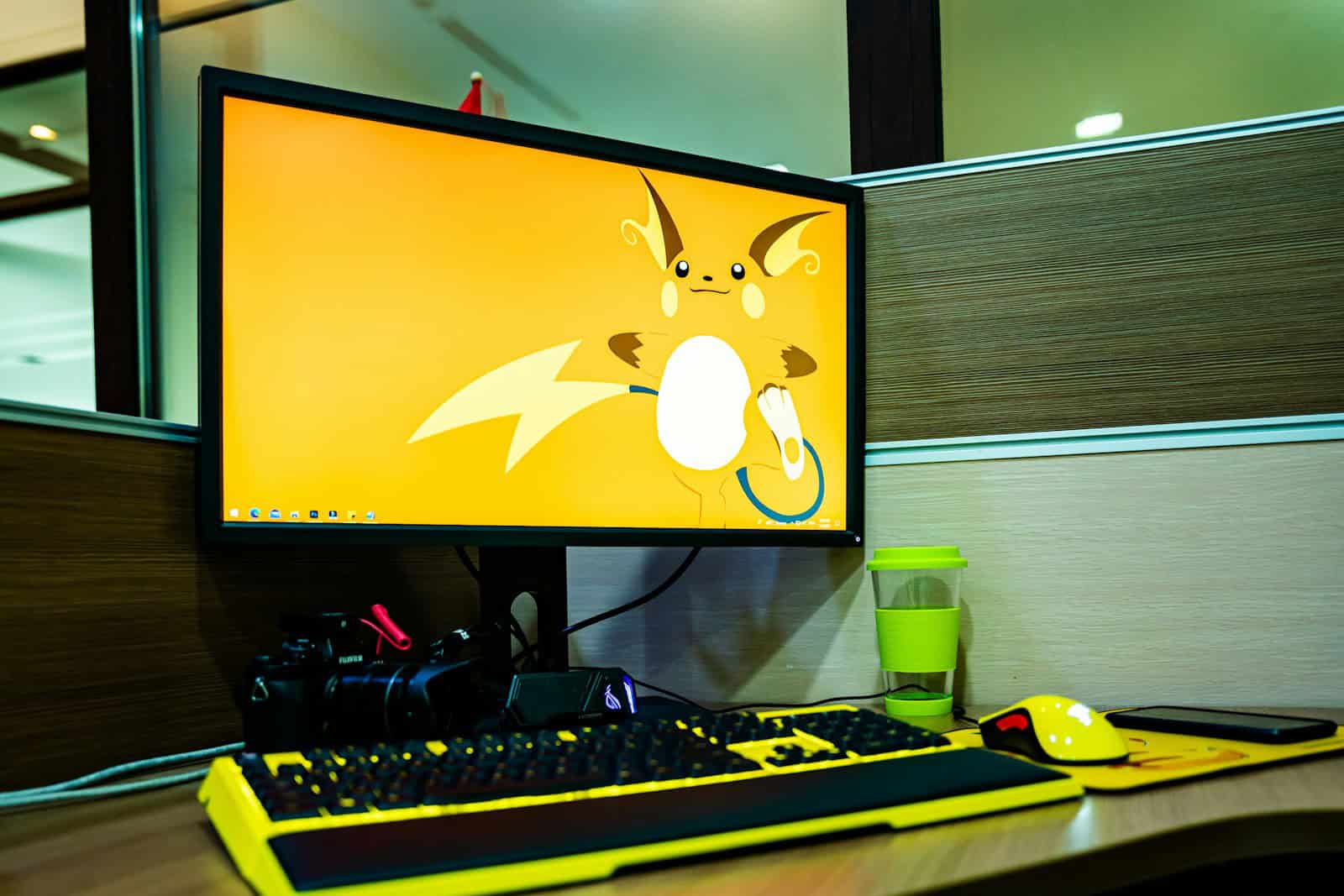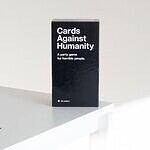Pokémon trainers look for any advantage in battles, and understanding type matchups is essential for winning. There are 18 different Pokémon types, each with its own strengths and weaknesses. Knowing which types are strong against others helps trainers plan effective attacks and create balanced teams that can face different challenges.
Type effectiveness can be complicated, especially with dual-type Pokémon. Some combinations, like Dark/Ghost or Steel/Dragon, change usual weakness patterns, while others make them vulnerable to certain attacks, leading to receiving up to 4x damage from super-effective moves. Recently, there’s been more focus on psychic-type Pokémon, which are strong against Fighting and Poison types, but weak against Bug, Ghost, and Dark-type attacks.

Type charts are important tools for trainers of all levels. While basic type relationships stay the same, understanding how dual typing affects matchups can determine who wins or loses. This knowledge is especially helpful when facing tough opponents in competitive battles or challenging gym leaders. If you’ve ever wondered why your Electric move didn’t do much against a Ground-type Pokémon—or why a single Ice Beam knocked out your Dragon—you’ve seen how type matchups work in Pokémon.
Understanding these matchups is crucial for success. Whether you’re new to the franchise or preparing for competitive play, knowing each type’s strengths and weaknesses is key.
Understanding Pokémon Types: Offense vs. Defense
Each Pokémon and move in the franchise belongs to one or two of the 18 elemental types:
Normal, Fire, Water, Electric, Grass, Ice, Fighting, Poison, Ground, Flying, Psychic, Bug, Rock, Ghost, Dragon, Dark, Steel, and Fairy
Attack Advantage
When your move is super-effective against an opponent’s type, it deals 2x damage. If it’s super-effective against both of an enemy’s types (e.g., Water against a Ground/Rock Pokémon), the damage is multiplied: 4x damage. This is why learning type combinations is so important.
Conversely, an attack that’s not very effective deals 0.5x damage—or even less if both types resist it (down to 0.25x).
Immunity
Some type matchups result in no damage at all—this is called an immunity. For example:
- Normal- and Fighting-type moves don’t affect Ghost-types
- Electric-type moves have no effect on Ground-types
- Poison-type moves won’t work on Steel-types
What Is STAB?
STAB stands for Same Type Attack Bonus. When a Pokémon uses a move that matches its own type (say, a Fire-type Pokémon using Flamethrower), it gains a 1.5x damage bonus. That means a properly matched move could do even more than just relying on super-effective hits. And with Terastallizing in recent games, this bonus can reach 2x under the right conditions.
So yes, a Water Pokémon using a Water move on a Ground/Rock-type earns:
- 2x from Ground
- 2x from Rock
- 1.5x from STAB
Total: 6x damage — no wonder it’s a one-hit KO.
Complete Type Chart (Gen VI to Present)
The table below shows how effective each attacking type is against defending types. This modern version includes all updates since Gen VI, when the Fairy type was added:
| Attack ↓ / Defense → | NOR | FIR | WAT | ELE | GRA | ICE | FIG | POI | GRO | FLY | PSY | BUG | ROC | GHO | DRA | DAR | STE | FAI |
|---|---|---|---|---|---|---|---|---|---|---|---|---|---|---|---|---|---|---|
| Normal | 1 | 1 | 1 | 1 | 1 | 1 | 1 | 1 | 1 | 1 | 1 | 1 | 0.5 | 0 | 1 | 1 | 0.5 | 1 |
| Fire | 1 | 0.5 | 0.5 | 1 | 2 | 2 | 1 | 1 | 1 | 1 | 1 | 2 | 0.5 | 1 | 0.5 | 1 | 2 | 1 |
| Water | 1 | 2 | 0.5 | 1 | 0.5 | 1 | 1 | 1 | 2 | 1 | 1 | 1 | 2 | 1 | 0.5 | 1 | 1 | 1 |
| Electric | 1 | 1 | 2 | 0.5 | 0.5 | 1 | 1 | 1 | 0 | 2 | 1 | 1 | 1 | 1 | 0.5 | 1 | 1 | 1 |
| Grass | 1 | 0.5 | 2 | 1 | 0.5 | 1 | 1 | 0.5 | 2 | 0.5 | 1 | 0.5 | 2 | 1 | 0.5 | 1 | 0.5 | 1 |
| Ice | 1 | 0.5 | 0.5 | 1 | 2 | 0.5 | 1 | 1 | 2 | 2 | 1 | 1 | 1 | 1 | 2 | 1 | 0.5 | 1 |
| Fighting | 2 | 1 | 1 | 1 | 1 | 2 | 1 | 0.5 | 1 | 0.5 | 0.5 | 0.5 | 2 | 0 | 1 | 2 | 2 | 0.5 |
| Poison | 1 | 1 | 1 | 1 | 2 | 1 | 1 | 0.5 | 0.5 | 1 | 1 | 1 | 0.5 | 0.5 | 1 | 1 | 0 | 2 |
| Ground | 1 | 2 | 1 | 2 | 0.5 | 1 | 1 | 2 | 1 | 0 | 1 | 0.5 | 2 | 1 | 1 | 1 | 2 | 1 |
| Flying | 1 | 1 | 1 | 0.5 | 2 | 1 | 2 | 1 | 1 | 1 | 1 | 2 | 0.5 | 1 | 1 | 1 | 0.5 | 1 |
| Psychic | 1 | 1 | 1 | 1 | 1 | 1 | 2 | 2 | 1 | 1 | 0.5 | 1 | 1 | 1 | 1 | 0 | 0.5 | 1 |
| Bug | 1 | 0.5 | 1 | 1 | 2 | 1 | 0.5 | 0.5 | 1 | 0.5 | 2 | 1 | 1 | 0.5 | 1 | 2 | 0.5 | 0.5 |
| Rock | 1 | 2 | 1 | 1 | 1 | 2 | 0.5 | 1 | 0.5 | 2 | 1 | 2 | 1 | 1 | 1 | 1 | 0.5 | 1 |
| Ghost | 0 | 1 | 1 | 1 | 1 | 1 | 1 | 1 | 1 | 1 | 2 | 1 | 1 | 2 | 1 | 0.5 | 1 | 1 |
| Dragon | 1 | 1 | 1 | 1 | 1 | 1 | 1 | 1 | 1 | 1 | 1 | 1 | 1 | 1 | 2 | 1 | 0.5 | 0 |
| Dark | 1 | 1 | 1 | 1 | 1 | 1 | 0.5 | 1 | 1 | 1 | 2 | 1 | 1 | 2 | 1 | 0.5 | 1 | 0.5 |
| Steel | 1 | 0.5 | 0.5 | 0.5 | 1 | 2 | 1 | 1 | 1 | 1 | 1 | 1 | 2 | 1 | 1 | 1 | 0.5 | 2 |
| Fairy | 1 | 0.5 | 1 | 1 | 1 | 1 | 2 | 0.5 | 1 | 1 | 1 | 1 | 1 | 1 | 2 | 2 | 0.5 | 1 |
How the Type Chart Has Evolved Over Time
- Gen I (Red/Blue/Yellow): Lacked Steel, Dark, and Fairy types. Some matchups were inconsistent (e.g., Ghost wasn’t effective against Psychic).
- Gen II (Gold/Silver): Introduced Steel and Dark types to balance Psychic’s dominance.
- Gen VI (X/Y): Introduced Fairy type to counter Dragons and added balance tweaks (e.g., Steel no longer resisted Dark and Ghost).
- Gen VIII (Sword/Shield) and Gen IX (Scarlet/Violet): No new types added, but mechanics like Dynamax, Terastallizing, and abilities shifted battle dynamics significantly.
Why Mastering Type Matchups Matters
Whether you’re building a competitive team or just trying to survive a tough gym battle, type effectiveness gives you a massive advantage. Understanding how types interact—both in traditional turn-based battles and in real-time formats like Pokémon GO—can help you exploit weaknesses, survive counters, and create more strategic gameplay overall.
And with rumors of future generational shifts or potential type rebalance discussions always on the horizon, staying familiar with the type chart remains one of the smartest moves you can make.
Key Takeaways
- Understanding the 18 Pokemon types and their relationships is fundamental to developing effective battle strategies.
- Dual-type Pokemon create unique defensive profiles that can result in both significant vulnerabilities (4x damage) and resistances (1/4 damage).
- Building a team with complementary type coverage helps address potential weaknesses and creates a more balanced competitive lineup.
Understanding Pokemon Types
Pokemon types form the foundation of battle strategy, determining which attacks will deal more damage and which will fall flat. Type matchups create a strategic layer that every trainer must master to succeed in battles.
The Basis of Type Effectiveness
Type effectiveness in Pokemon battles works on a simple principle: certain types are strong against others. When a Pokemon uses a move that’s “super effective” against its opponent’s type, the attack deals double damage. For example, Water-type moves deal double damage to Fire-type Pokemon because water extinguishes fire.
Conversely, some type matchups result in “not very effective” attacks that deal only half damage. Water attacks against Grass Pokemon fall into this category, as plants absorb water for strength.
Some type combinations even grant immunity to certain attacks. Ghost-type moves have no effect on Normal-type Pokemon, while Ground moves can’t touch Flying types at all.
Type Matchup Charts and Balance
Type matchup charts display all possible type interactions in the Pokemon world. These charts show which types are strong, weak, or immune to others. The game developers carefully balance these relationships to ensure no single type dominates the meta.
For instance, Psychic-type Pokemon are weak to Bug, Ghost, and Dark attacks. This creates a natural check to what could otherwise be overpowered Pokemon.
The full type chart includes:
- 18 different Pokemon types
- Over 300 unique type interactions
- Complex dual-type combinations that can create unique defensive profiles
Type balance evolves with each new Pokemon generation, with the Fairy type being added in Generation 6 specifically to counter Dragon types.
Importance of STAB (Same-Type Attack Bonus)
STAB, or Same-Type Attack Bonus, provides a 50% power boost when a Pokemon uses a move matching its own type. This crucial battle mechanic rewards Pokemon for using moves aligned with their natural abilities.
For example, a Water-type Pokemon using Surf (a Water move) will deal 50% more damage than a non-Water type using the same move. This bonus applies to both single and dual-typed Pokemon.
STAB becomes especially powerful when combined with type effectiveness. A Fire move used by a Fire Pokemon against a Grass opponent gets both the STAB bonus and the super-effective multiplier, resulting in devastating damage.
Smart trainers build teams with good type coverage and maximize STAB potential to handle various battle situations efficiently.
Recent Changes in Type Effectiveness
The Pokémon type chart has seen several important updates in recent years, with Game Freak making strategic adjustments to balance gameplay. These changes have shifted competitive battles and created new strategies for trainers to explore.
Game Freak’s Updates
Game Freak has been careful about changing the type effectiveness chart throughout Pokémon’s history. In fact, significant changes have only happened twice in over 20 years. The first major update came with Generation 2, which introduced Dark and Steel types to the game.
The second notable change happened in Generation 6 (X and Y), when the Fairy type was added as a counter to Dragon types. This addition completely changed the competitive landscape, as Dragon-type Pokémon had become too dominant.
Steel types also saw adjustments in this update, losing their resistance to Ghost and Dark types. These carefully considered changes helped maintain game balance without disrupting the core mechanics too drastically.
Impact of New Moves and Abilities
While the actual type chart has remained relatively stable, new moves and abilities have significantly altered type effectiveness in practice. Abilities like Levitate negate Ground-type damage, while Dry Skin increases vulnerability to Fire attacks.
Terastal phenomenon in recent games allows Pokémon to temporarily change their type, creating new strategic options. This mechanic lets trainers bypass traditional type weaknesses in unexpected ways.
Moves with unique properties have also influenced effectiveness. For example:
- Freeze-Dry: A unique Ice move that’s super effective against Water types
- Flying Press: Combines Fighting and Flying type damage
- Thousand Arrows: Hits Flying types and those with Levitate
These special cases create exceptions to the standard type chart and add complexity to battle strategies.
Pokemon Scarlet and Violet Adjustments
Pokémon Scarlet and Violet didn’t change the fundamental type chart, but they introduced Terastallization, which allows Pokémon to change their type during battle. This mechanic can completely alter a Pokémon’s weaknesses and resistances.
The Paradox Pokémon introduced in Scarlet and Violet often feature unusual type combinations that create interesting defensive profiles. For example, Iron Treads combines Steel and Ground types for a unique set of resistances.
Some new abilities in these games also affect type matchups:
- Protosynthesis/Quark Drive: Boost a stat in specific conditions
- Orichalcum Pulse: Powers up Fire moves in sun
- Good as Gold: Provides immunity to status moves
These games focused more on adding new mechanics that work alongside the existing type chart rather than changing the chart itself.
In-Depth Analysis of Specific Type Weaknesses
Understanding Pokémon type weaknesses is crucial for building effective battle strategies. Each type has unique vulnerabilities that can be exploited by knowledgeable trainers.
Fire Type: Strengths and Vulnerabilities
Fire-type Pokémon are powerful offensive choices but have several significant weaknesses. They are particularly vulnerable to Water, Rock, and Ground-type attacks, which deal double damage.
Fire types shine against Grass, Bug, Ice, and Steel opponents, making them valuable counter-picks in many battle scenarios. They resist Fire, Grass, Ice, Bug, Steel, and Fairy attacks.
A smart strategy when facing Fire types is to lead with Water Pokémon like Blastoise or Gyarados. Rock-type moves such as Stone Edge can also be devastating against Fire types, especially those that are also Flying type (like Charizard).
Notable Fire weaknesses:
- Water (2x damage)
- Rock (2x damage)
- Ground (2x damage)
Water Type and its Counter Strategies
Water-type Pokémon are among the most balanced in the game, with only two weaknesses: Electric and Grass-type attacks. This limited vulnerability makes them excellent defensive choices.
Water types deal super-effective damage against Fire, Ground, and Rock opponents. They also resist Fire, Water, Ice, and Steel attacks, giving them good staying power in battles.
To counter Water types effectively, Electric Pokémon like Raichu or Jolteon are top choices. Grass types can also work well, though they bring their own vulnerabilities to the matchup.
Many competitive trainers pair Water types with Pokémon that can cover their Electric and Grass weaknesses. For example, Ground types can protect against Electric attacks while Flying types can handle Grass threats.
Understanding the Complexity of Grass Type
Grass-type Pokémon have a complex weakness profile that makes them challenging to use effectively. They are vulnerable to five different types: Flying, Poison, Bug, Fire, and Ice.
Despite these weaknesses, Grass types offer strong coverage against Water, Ground, and Rock Pokémon. They resist Ground, Water, Grass, and Electric attacks, making them useful in specific matchups.
Grass types like Venusaur and Roserade can thrive when properly supported by teammates that offset their weaknesses. Pairing them with Fire or Flying types creates good defensive synergy.
When facing Grass types, Fire Pokémon are often the safest counter choice. Bug-type moves are also effective, though Bug Pokémon themselves may struggle with their own vulnerabilities.
The best Grass-type players recognize when to switch out against unfavorable matchups rather than trying to power through disadvantageous type matchups.
Dual-Type Combinations and Their Impact on Battle Strategies
Dual-typing in Pokémon significantly changes how trainers approach battles. These combinations create unique offensive and defensive profiles that can either magnify strengths or neutralize weaknesses compared to single-type Pokémon.
Synergy and Weaknesses of Common Dual-Types
Water/Ground is one of the most strategic type combinations in Pokémon GO. This pairing gives Pokémon like Swampert only one weakness—Grass—while providing immunity to Electric attacks that would normally devastate Water types.
Ghost/Dark types like Sableye offer incredible defensive advantages with immunities to Normal, Fighting, and Psychic moves. These immunities effectively nullify weaknesses that would exist if the Pokémon had just one of these types.
Steel/Fairy Pokémon are defensive powerhouses, resisting 10 different types. They’re particularly valuable against Dragon-type attackers, as they’re completely immune to Dragon moves while maintaining strong defensive capabilities.
Some combinations create quadruple weaknesses. Ice/Rock Pokémon suffer 4× damage from Fighting and Steel moves, making them extremely vulnerable despite their offensive potential.
When building teams, smart trainers pair Pokémon with complementary dual-types. A Flying/Steel type can cover the weaknesses of a Fighting/Dark Pokémon, creating balanced team synergy that’s hard to counter.
The Role of Abilities and Moves in Type Weaknesses
While type matchups create the foundation of Pokémon battles, abilities and moves introduce additional layers that can completely change battle outcomes. These elements can transform standard type weaknesses or create unique advantages beyond the typical type chart.
How Abilities Affect Type Matchups
Certain abilities directly modify type effectiveness, creating exceptions to the standard weakness chart. Levitate grants immunity to Ground-type moves for Pokémon that would otherwise be vulnerable, like Electric-types. This ability is found on Pokémon such as Rotom and Bronzong.
Wonder Guard, exclusive to Shedinja, takes this concept further by making the Pokémon immune to all moves that aren’t super effective against it. This drastically changes how opponents must approach the battle.
Thick Fat reduces damage from Fire and Ice attacks by 50%, effectively weakening what might otherwise be a super effective hit. Pokémon like Snorlax and Hariyama benefit from this defensive ability.
Other notable examples include:
- Flash Fire: Absorbs Fire moves and boosts the user’s Fire-type attacks
- Water Absorb: Heals the Pokémon when hit by Water moves
- Volt Absorb: Restores HP when hit by Electric attacks
Moves That Change Type Dynamics
Several moves can alter type dynamics mid-battle, creating strategic opportunities. Moves like Soak temporarily change the opponent’s type to Water, potentially exposing new weaknesses or removing resistances.
Weather-inducing moves also impact type effectiveness. Rain Dance boosts Water-type moves while weakening Fire attacks. Similarly, Sunny Day strengthens Fire while reducing Water damage.
Terrain-setting moves add another dimension. Electric Terrain prevents sleep while boosting Electric attacks. Psychic Terrain blocks priority moves and enhances Psychic power.
Some special moves bypass type immunities entirely:
- Thousand Arrows hits Flying types despite their Ground immunity
- Sound-based moves can hit through Substitute
- Feint and Phantom Force bypass Protect and similar defensive moves
Terastallization, introduced in newer games, allows Pokémon to change their type during battle, completely reshaping their weakness profile.
Strategic Insights for Battling Against Specific Types
Understanding type matchups provides a significant advantage in Pokémon battles. The right strategy against specific types can turn a challenging battle into a decisive victory.
Countermeasures Against Electric-Type Pokemon
Electric-type Pokémon are known for their high speed and powerful special attacks. They can paralyze opponents and deal massive damage, especially to Water and Flying types.
Key Weaknesses to Exploit:
- Ground-type moves are super effective against Electric types
- Ground-type Pokémon are completely immune to Electric attacks
- Grass-types resist Electric moves
Recommended Strategy:
- Lead with Ground-types like Garchomp or Marowak
- Use moves like Earthquake or Earth Power for maximum damage
- Avoid using Water or Flying Pokémon unless they have exceptional defenses
Electric types often struggle with defensive capabilities. Their relatively low physical defense makes them vulnerable to physical Ground-type attacks.
Tactics to Handle Ice-Type Challenges
Ice-type Pokémon are offensive powerhouses that can deal super-effective damage to many popular types including Dragon, Flying, Grass, and Ground.
Effective Counters:
- Fire-type moves melt Ice Pokémon quickly
- Fighting-type attacks break through ice defenses
- Steel and Rock types also deal super-effective damage
Ice-types generally have poor defensive stats and multiple weaknesses. This makes them glass cannons—powerful but fragile.
Battle Approach:
- Use fast Fire-types to strike first
- Consider Fighting-types with high attack stats
- Watch out for Ice Beam on Water-types
Many Ice Pokémon have secondary types that may introduce additional weaknesses or resistances. Research your opponent’s specific Pokémon before battling.
Overcoming the Defense of Steel-Type Pokemon
Steel-type Pokémon are defensive titans with resistance to 10 different types. They form the backbone of many competitive teams due to their incredible defensive capabilities.
Breaking Through Steel Defenses:
- Fire-type moves are highly effective
- Fighting-type attacks work well against Steel
- Ground-type moves provide another option
Tactical Considerations:
- Use powerful special attackers with Fire moves
- Fighting types with high Attack stats can punch through Steel defenses
- Consider Pokémon with the Mold Breaker ability to ignore abilities like Levitate
Steel types often have slow speed stats. Use this to your advantage by striking first with super-effective moves before they can set up defensively.
Their weakness to Ground makes them vulnerable to Earthquake, one of the most common and powerful physical moves in the game.
Type Coverage and Building a Balanced Team
Building a team with proper type coverage is essential for success in Pokémon battles. A well-balanced team can counter various threats and provide strategic advantages against opponents.
Considerations for Comprehensive Coverage
When building a balanced team, trainers should aim to cover as many types as possible with their attacks. Ideally, a team should have moves that can hit all 18 Pokémon types for super-effective damage.
Fire, Grass, and Fighting types are particularly valuable for coverage. Fire handles Bug/Steel combinations, Grass counters Water/Ground, and Fighting is effective against Normal, Rock, Steel, Ice, and Dark types.
Some type combinations to consider:
- Water/Ground: Only weak to Grass
- Electric/Flying: Only weak to Ice and Rock
- Steel/Fairy: Provides resistances to many types
Tools like Marriland’s Team Builder can help visualize team weaknesses and resistances at a glance. This makes it easier to spot gaps in your coverage.
Immunities are also valuable assets. Ghost-types are immune to Normal and Fighting, while Ground-types can ignore Electric attacks completely.
Selecting Pokémon with Complementary Strengths and Weaknesses
The key to team building is selecting Pokémon whose strengths cover others’ weaknesses. For example, if you have a Fire-type that’s weak to Water, include an Electric or Grass Pokémon to counter Water threats.
Dual-type Pokémon offer more resistances and coverage with fewer team slots. A Bug/Steel Pokémon like Scizor resists many types but has a critical Fire weakness that needs team support.
Consider these combinations for balanced teams:
- Fire + Water + Grass (core typing balance)
- Psychic + Dark + Fighting (strategic type triangle)
- Dragon + Fairy + Steel (excellent defensive synergy)
Move selection is equally important as type selection. A Fire-type with Earthquake can handle both Fire-weak and Electric-type Pokémon.
In Pokémon GO, team balance works differently since trainers can only use three Pokémon in battles. This makes coverage even more critical, as each Pokémon must handle multiple threats.
Frequently Asked Questions
Players often have questions about Pokémon type advantages and disadvantages. The type system forms the core of battle strategy, with recent updates introducing subtle yet important changes to the familiar weakness chart.
What changes have been made to the Pokémon type weakness chart in the latest update?
The latest update has slightly modified Ice-type vulnerabilities, giving it better defensive capabilities against Water-type attacks. Fairy-type effectiveness has been reduced against Steel-type Pokémon, making Steel even more defensively valuable.
Some Dragon-type moves now deal neutral damage to Fairy Pokémon in specific battle scenarios, though this is limited to certain special moves rather than a complete type chart change.
These adjustments aim to balance competitive gameplay while maintaining the core type relationship system that Pokémon is known for.
How can one effectively memorize the complex matrix of Pokémon type weaknesses and resistances?
Creating visual aids like color-coded charts helps many trainers remember type relationships. Focusing on logical connections often works better than rote memorization – for example, Water extinguishes Fire.
Practice through regular battles reinforces type knowledge naturally. Many players use mobile apps specifically designed to help memorize the Pokémon type chart.
Starting with just one type and gradually learning its relationships before moving to another helps prevent overwhelm when learning the full type chart.
What is the comprehensive list of weaknesses for Bug-type Pokémon in the current game version?
Bug-type Pokémon are weak to Flying, Rock, and Fire-type attacks, taking double damage from these sources. This triple weakness makes pure Bug-types somewhat vulnerable defensively.
The Flying weakness relates to birds being natural predators of insects, while the Rock and Fire weaknesses represent crushing and burning threats to bugs in nature.
Many competitive Bug-type Pokémon rely on secondary types to offset these weaknesses or focus on speed and powerful first strikes to compensate.
Are there any Pokémon with a combination of types that results in zero weaknesses, according to the latest game data?
Normal/Ghost would theoretically create a Pokémon with no weaknesses, but this combination doesn’t currently exist in the game. Eelektross, with its Levitate ability, effectively has zero weaknesses despite being pure Electric-type.
Certain type combinations like Water/Ground (Swampert) and Electric/Flying (Zapdos) have only one weakness, making them nearly invulnerable in many battle scenarios.
Some Pokémon can achieve zero weaknesses through abilities like Wonder Guard (Shedinja) or items like Air Balloon, though these protections can be removed during battle.
What specific vulnerabilities are associated with Fighting-type Pokémon as per the latest gameplay mechanics?
Fighting-type Pokémon remain weak to Psychic, Flying, and Fairy-type attacks. These weaknesses represent mind over muscle, aerial advantages, and magical power overcoming brute force.
Flying-type attacks are particularly effective in competitive play against Fighting types, with many high-speed Flying Pokémon able to strike before slower Fighting types can respond.
The Fairy weakness, added in Generation 6, created an important additional check on Fighting-type Pokémon that had become increasingly dominant in the competitive meta.
How do Psychic-type Pokémon’s weaknesses fluctuate with the introduction of new game editions or updates?
Psychic-type vulnerability has evolved significantly since the early games. Originally weak only to Bug-type attacks, Dark-type was introduced in Generation 2 specifically to counter Psychic dominance.
Ghost-type attacks became properly effective against Psychic in Generation 2, fixing a programming oversight from the original games where they were incorrectly implemented.
Recent updates haven’t changed Psychic-type core weaknesses, but the increasing variety of Dark and Ghost-type moves has made Psychic Pokémon more vulnerable in the current meta despite their raw stats often being excellent.






